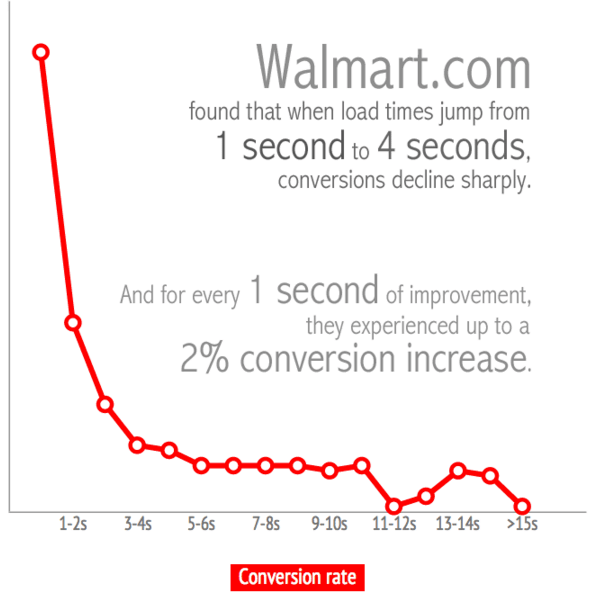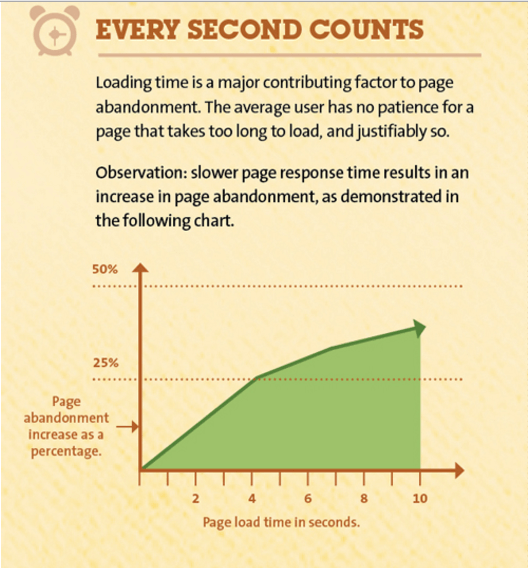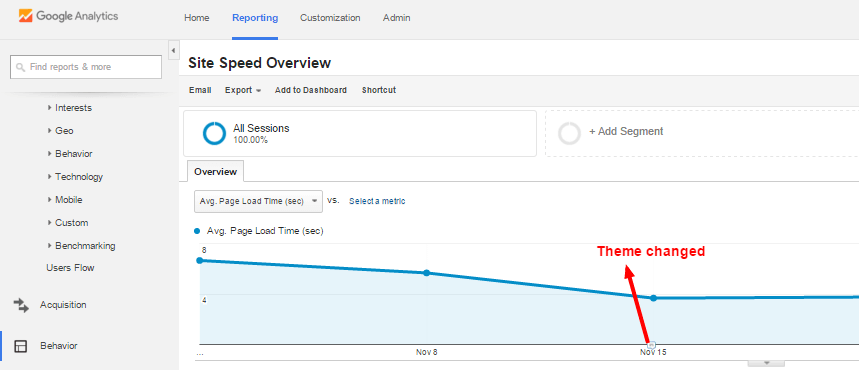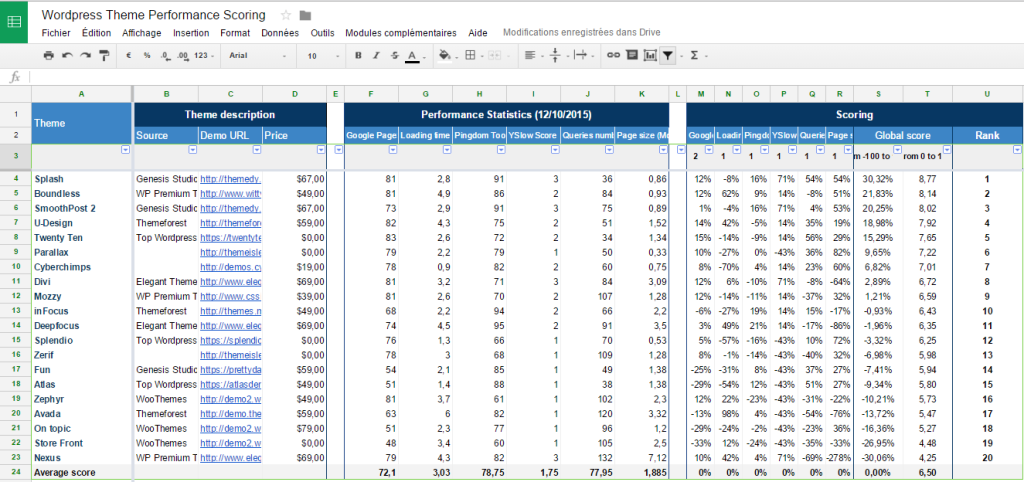Every web expert knows how important performance is to a website. When loading time exceeds let’s say 2 seconds, it can negatively impact both the SEO of the website, as well as its conversion rate. Many studies have been conducted on the correlation between average page loading time and conversion rates, and the results have always been the same: one second more in the loading time leads to 5 to 10% decrease in the conversion rate.
In case of a WordPress website, the theme plays a particularly important role in reducing the average loading time of a page, and the overall website’s performance. In order to help entrepreneurs and professional website builders to choose a powerful WordPress theme among the wide range of available themes, we conducted a comparative study of 20 WordPress themes, and have analyzed the performance of each theme with the help of several criteria.
The key role of a WordPress theme in the performance of a website
Website loading time and conversion rate
As stated in the introduction, many studies have emphasized on the correlation between the loading time and the conversation rate. The first example is Walmart.com. The biggest American retailer has conducted many studies on this topic. The graph clearly shows a decrease in the conversion rate while going from less than a second to more than 2 seconds for the average loading time. Starting from 3 seconds on, each additional second has a more limited impact, and generates a decrease of approximately 2 % in the conversion rate.

Given the size of the company, the Walmart.com website may not be a very relevant example. Let’s take a second example, rather a series of examples. Kissmetrics, a best of breed Web Analytics solution conducted a similar survey on a large number of websites. They found out that an additional second in the average loading time of a website generates a decrease of about 7 % in the conversion rate. This decrease in the conversion rate is primarily explained by the increased rebound rate and exit rate, as illustrated in the graph below.

The WordPress theme, an asset or a liability for your performances?
A WordPress theme can be too minimalist, and it may only contain a few template pages (archives.php, single.php, home.php, etc.), some PHP functions, and a stylesheet CSS (see theme definition in Codex. To meet the needs of majority of people, especially millions of beginners, who don’t want to change a single line of code, there are, of course, much more comprehensive themes. These comprehensive themes include dozens of templates, hundreds of parameters and even plugins that are automatically installed with the theme. They are available on platforms such as ThemeForest or CreativeMarket.
Depending on the chosen theme, the number of pages and the number of queries can triple. This will have a considerable impact on the average loading time of a website. However, let’s not draw any conclusion too quickly :the comprehensive themes may beheavier, yet they are often better optimized and may finally achieve performance somewhat similar to the minimalistic themes.
Let me tell you a little bit more about an bad experience we had when choosing a theme without taking into account its performance:
With more than 180 000 sales, Avada is one of the most popular WordPress themes on ThemeForest. Nowadays, we want to go fast and do not want to lose time on existing design and features, so a comprehensive theme like Avada, with a basic theme for our specific needs always seems interesting.

We have bitterly regretted this choice… Despite all the optimizations performed (cache, minify files, etc., see “Performance Unleashed: How To Speed Up WordPress Load Times”), the total loading time of a page structurally remained above 6 seconds. We redesigned this website in November 2015, and this time we chose the Genesis theme, with a basic custom theme. The average loading time of a page significantly decreased, and we still have room to optimize performance!

Of course, the loading time should not be the only criterion for choosing a WordPress theme, but it is definitely an important one.
The main results of our comparison of 20 WordPress themes- Loading time and performance
In order to help the web developers and entrepreneurs to choose an efficient WordPress theme, we have analyzed 20 WordPress themes with the help of various performance tools: Tools PingDom, Google PageSpeed et YSlow. Here is an infographics that better summarizes the results of our experiment.
You can find all of the results in the spreadsheet below. Of course, our goal is for this study to be updated regularly, so don’t hesitate to ask us editor access to make changes.
Methodology
Selection of criteria
Measuring the loading time of a page is not a straight forward process. It requires to have a clear definition of what the “page loading” truly is. What is the event that enables us to know that the page is completely loaded? Should all the resources of the page be loaded or only the items above the waterline? For those who want to dig the issue, I invite you to read this excellent article regarding the subject. Then, measure the loading time by restricting all means: internet connection speed, distance with the server, etc. To address these issues, we have decided to choose 5 different indicators:
- Google Page Speed’s grade: Thanks to the recommendations, score from 0 to 100 offered by Google to measure the performance of a page and improve this note. Read more
- Pingdom Tools‘ grade: Score from 0 to 100 calculated based on the number of the good practices observed
- Loading time (from Pingdom Tools): Test conducted from Amsterdam
- Page Weight (from GTmetrix): Test conducted from Vancouver with Firefox
- Number of queries (from GTmetrix): Test conducted from Vancouver with Firefox
Scoring
Step 1 – Normalization of results
In order to be able to take into account the of the results in the calculation of the overall score of the theme, whether it is loading time or a score of 100, we have attempted to standardize the results. We chose a relative approach, which consists of assigning a score according to the position compared to the average, with 0 being the average. For example, if the average score of Google PageSpeed for all the themes is 60, a theme that gets 30 will have a score of -50%, one that gets 60, will have average score of 0, and the one that gets 90, will have average score of 50 %. This method allows us to determine a score that roughly varies from -100 to 100 associated to each performance test result.
Stage 2 – Aggregate scoring
For the overall score, we have calculated a weighted average of the different performance scores. Why weighted? Because, we wanted to give a little more weight to the note from Google PageSpeed, which has the advantage of evaluating the performance of the pages outside the network performance, and especially of being offered by Google, which has been using the performance of the pages as a criterion for its search engine ranking since 2010.
From the weighted average performance scores, we calculated the final overall score out of 10. We added a 1.5 factor in the final score calculation to maximize the deviations.
Our study’s limitations
There is an obvious limit, and still quite troublesome in our comparison. The performance tests are conducted on the demo versions of the themes. These “demo” themes run servers that are not equally as powerful, are not optimized in the same way, and display contents that is not similar from one demo to another, which create considerable differences within the weight of the pages ( apart from the influence of the installed theme).
In order to get more reliable results, you should install 20 themes on the same website, with the same environment behind. The difficulty is that this requires buying a large number of premium themes… So far, we haven’t given up. For the requirements of the WordPress Plugin InTrigger (lead generation), we plan to set up multi-test environment themes. This will be an opportunity to update these metrics with more reliable results than the small ten themes sample that we now have. If you want to share your theme with us so that we can compare it with other themes in multi-test environment themes, please feel free to send us an email!


Leave a Reply